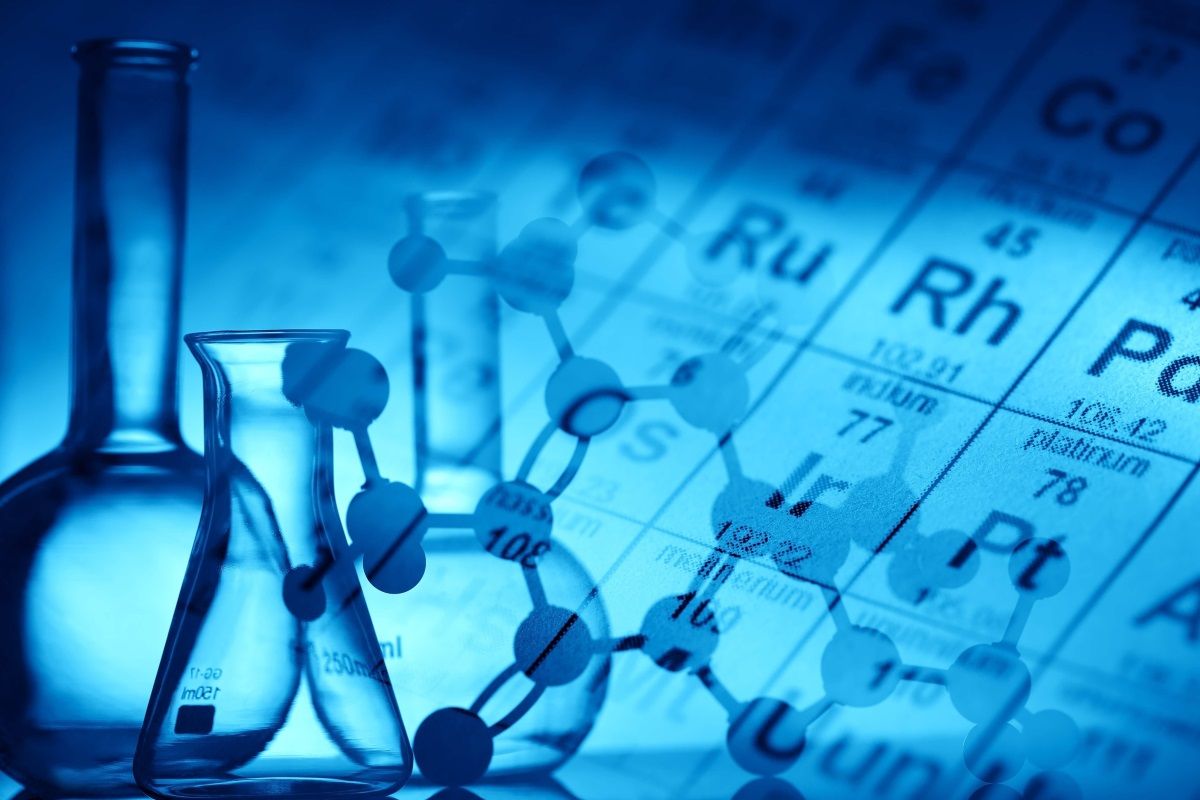Plastic additives technology has made some massive advancements over the past 10 years, but with all of the different options available how can someone choose which path to go down? The term “additives” is a loose one, so we first need to clarify what we’re referring to. The basic definition is something that is added to a base polymer for performance enhancements, typically with a low percentage of the overall resin make up.
We have broken the “additives” into a few distinct categories of; Blowing Agents, Fillers and Plasticizing Agents.
Blowing Agents
Blowing agents have been around for 10+ years, however as advancements continue the usage has become more frequent in the industry. These agents are used in a variety of applications and processing techniques, A blowing agent is a substance which is capable of producing a cellular structure via a foaming process in a variety of materials that undergo hardening or phase transition, such as polymers, plastics, and metals. They are typically applied when the blown material is in a liquid stage.
What’s the benefit of this new cellular structure?
Through a reaction within the polymer, a blowing agent reduces density, increasing thermal and acoustic insulation, while increasing relative stiffness of the original polymer. That’s sounds great right? But how much reduction could you see in your density/part weight? What about cycle time reductions?
According to the data, there is a high likely hood that you can reduce overall part weight by up to 20% and reduce your cycle time by 20%. The key to achieving the maximum density and cycle time reduction will depend on the part design/geometry and the injection molding machines capabilities. If your injection molding machine has a very low and limited injection rate, then this can hinder the processing of a blowing agent to achieve maximum results.
How does this additive get blended?
The blowing agent is blending into your molding process similarly to how a colorant is blended, with most companies using a gravimetric blender feeding the colorant/blowing agent or other additives directly into the throat of the screw/barrel assembly with typically a mixture ratio of <4%.
Once the material is fed into the screw and barrel, the chemical process takes over and adjust in the injection profile have to be made for the agent to react and “do the work for you”. If you don’t make those adjustments, then you are bypassing the purpose of the agent and won’t see any results.
Who’s a leader in this space?
Right now ID Additives has been making some major break throughs in the blowing agent space and has continued to perfect their formula over the past 8 years. The team at ID Additives knows their stuff and can help educate anyone on the best uses and optimal processing conditions.
Fillers
There are 1,000’s of different “fillers” that are used in the plastics industry, determine which filler is ideal for your application will require an in-depth conversation with a polymer expert at your preferred resin distributor or compounder. In general, a filler is used as a most cost effective alternative and reduce the overall percentage of the base resin. Similar to a blowing agent, fillers have a lower percentage of use in the overall material make up, typically <7% of total part density.
By adding a filler and reducing the overall base resin, the goal is to reduce the overall costs without changing the integrity of the product. There are fillers that are specifically meant to increase product performance therefore any reductions may not be realized because of the higher cost of the filler.
Below are the 3 most common fillers used today
Calcium Carbonite
Calcium carbonite is the most common filler and represents over half of the total inorganic fillers used in the plastic industry. It is the main component of eggshells, seashells, pearls, and chalk. It is often mined in quarries as limestone or marble.
As plastic filler, calcium carbonite may reduce overall strength, but it increases tensile modulus and density. It lowers costs by extending a more expensive base resin, it provides opacity and surface gloss, improves impact strength and is a processing aid. It is used in a wide variety of thermoplastics.
Hydrous Magnesium Silicates (Talc)
Talc is the softest mineral on the market with a Mohs hardness of one. Talc is primarily added to polypropylene but is also added to polyethylene and polyamides (nylons) to increase stiffness and rigidity. Talc also improves lubricity and impact strength. Polypropylene parts with as much as 40% talc have replaced many metal parts in automotive applications such as bumpers, interior plastic ductwork and fasciae.
Talc is used in household appliances and engineered plastic hardware. It is used as an anti-bloc and in polypropylene it is used for:
- automotive under-hood applications, including cooling fans, air ducting, electrical housings
- other automotive applications, including fascia panels, headlight housings
- domestic appliances, including washing machine and tumble dryer components, kettle bodies, housings for irons and toasters, vacuum cleaner internal parts
- power tool housings
- lawn mower parts
- garden furniture
Mica
When mica is added to a polymer, the resultant composite is characterized by high stiffness, high dimensional stability and good dialectical properties. Mica is often used as an extender in common thermoplastics. It may reduce strength but increase modulus and density.
Mica is used in polypropylene to increase flexural modulus. Plastic hardware is commonly filled with 20% or 40% mica but loads as high as 60% have been recorded. A 40% loading increases the flexural modulus of the plastic from 4450 to 6450 psi.
Mechanical Properties: The addition of mica in plastics normally increases its tensile and flexural strengths. Mica has a pronounced effect on modulus of elasticity at the same time decreases its elongation. It further improves the notched impact strength of same polymers.
Thermal Properties: The incorporation of mica reduces thermal expansion and helps to eliminate the non-uniform thermal shrinkage and causes warping it also reduces mold shrinkage and facilitates mold release. Mica has a variable and generally negative effect on impact strength.
Electrical Properties: Mica enhances the dielectric, heat-resisting and insulating properties of plastics. Mica fillers improve deflection temperature. Mica, being a natural inorganic mineral, is among the most radiation resistant dielectric material and thus is able to absorb up to 80% of incident ultra-violet radiation protecting plastics against degradation.
Chemical Properties: Mica, being a stable and completely inert to the action of water, acids (with exception of concentrated sulphuric/phosphoric acid mixtures and hydrofluric acid), alkalies, conventional solvents, oils and virtually unaffected by atmospheric action.
Its flake like form and virtually unaffected by atmospheric action. Its flake like form provides an excellent barrier to chemical attack and therefore is most suitable for use in polyster or spray protective coatings.
Plasticizing Agents
While some polymers, like rubber, are naturally flexible, others, such as lignin or cellulose nitrate, are comparatively rigid and cannot be softened by exposure to non-solvent materials. For this reason, plasticizing compounds may be added to a polymer to reduce its stiffness and increase its formability. Plasticizers collect into groups of molecules between different polymer chains without altering the polymer’s volume. The result is less constrained polymer chain movement, as signaled by a rising dielectric constant.
Plasticizers should generally have a solubility level close to that of the polymer itself, and multiple plasticizing additives can be used in a single mixture as long as they are compatible with each other and the polymer.
When a plasticizer, such as dioctyl phthalate, is introduced to a polyvinyl chloride (PVC) polymer, it lowers its melt viscosity and increases its light stability. It provides resistance to oxidizing acids, but also makes the polymer more vulnerable to fungal contaminants and corrosives.
What are plasticizers and what are their benefits?
Plasticizers are colorless and odorless esters, mainly phthalates, that increase the elasticity of a material (e.g., polyvinylchloride (PVC)). Plasticizers soften the PVC to make it flexible and bendable. This opens up a huge range of possibilities for new applications. One of the main benefits of plasticizers is the durability they confer onto PVC applications, which can ensure high performances for up to 50 years. Without plasticizers, PVC can only be rigid, such as the PVC used in wastewater pipes.
What types of products are plasticizers used in?
Around 90 % of all plasticizers are used in the production of flexible polyvinyl chloride (PVC), also known as vinyl. The main applications for flexible PVC include flooring and wall coverings, roofing membranes, electrical cable and wire insulation, automotive applications, medical devices, synthetic leather goods, and so forth. Some plasticizers can also be used in rubber products, paints, printing inks, adhesives, and sealants for professional use. The use of plasticizers in all applications is strictly regulated.
What are they made of ?
Plasticizers are produced by a reaction of an alcohol with an acid such as adipic acid, phthalic anhydride, and so forth. The choice of alcohol and acid will determine the type of ester that can be produced and hence the kind of plasticizer. The combinations are almost endless, but only a very limited number have survived the rigorous performance, cost, availability, health, and environmental requirements that are imposed by the market including by users and regulation.
To learn more about resin raw materials available, click the image below!


